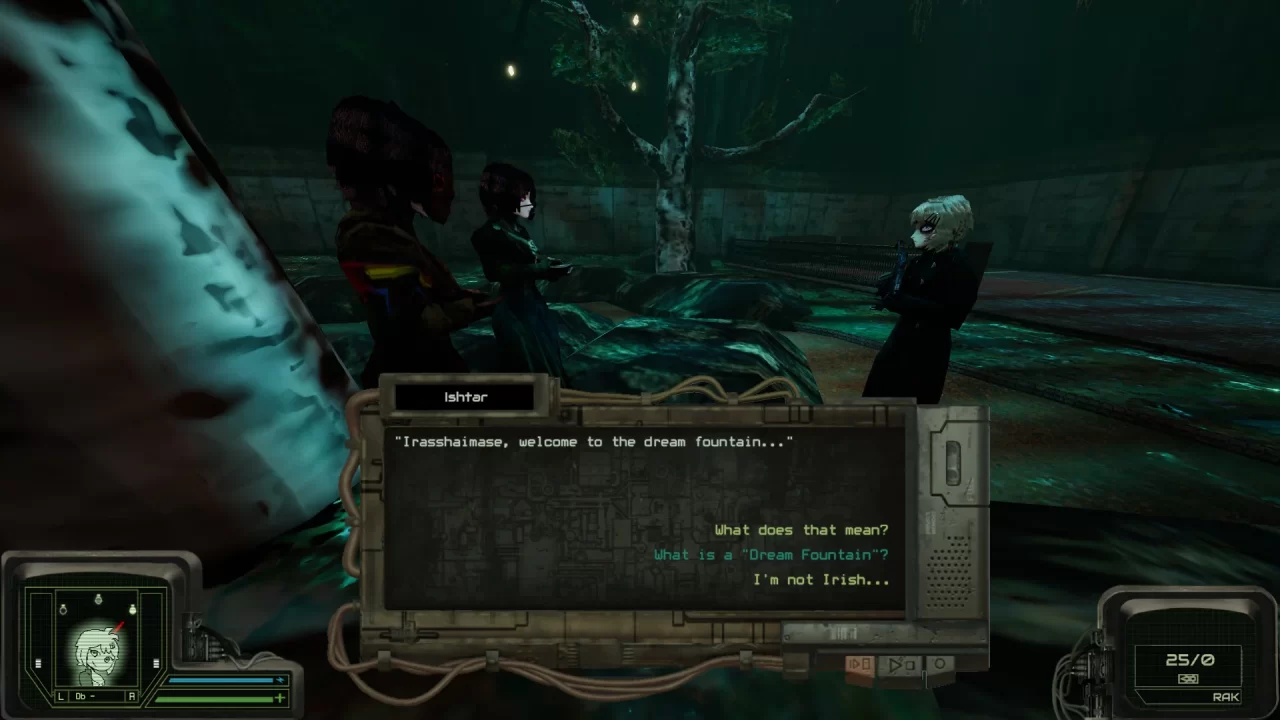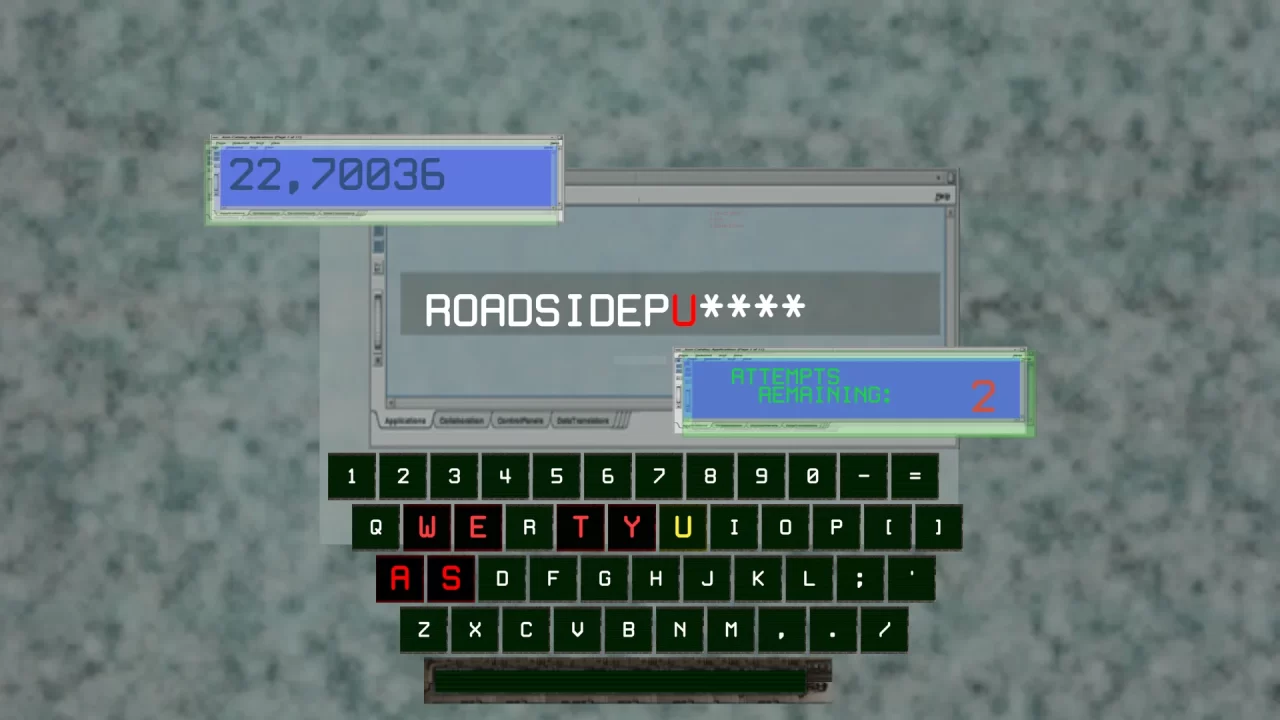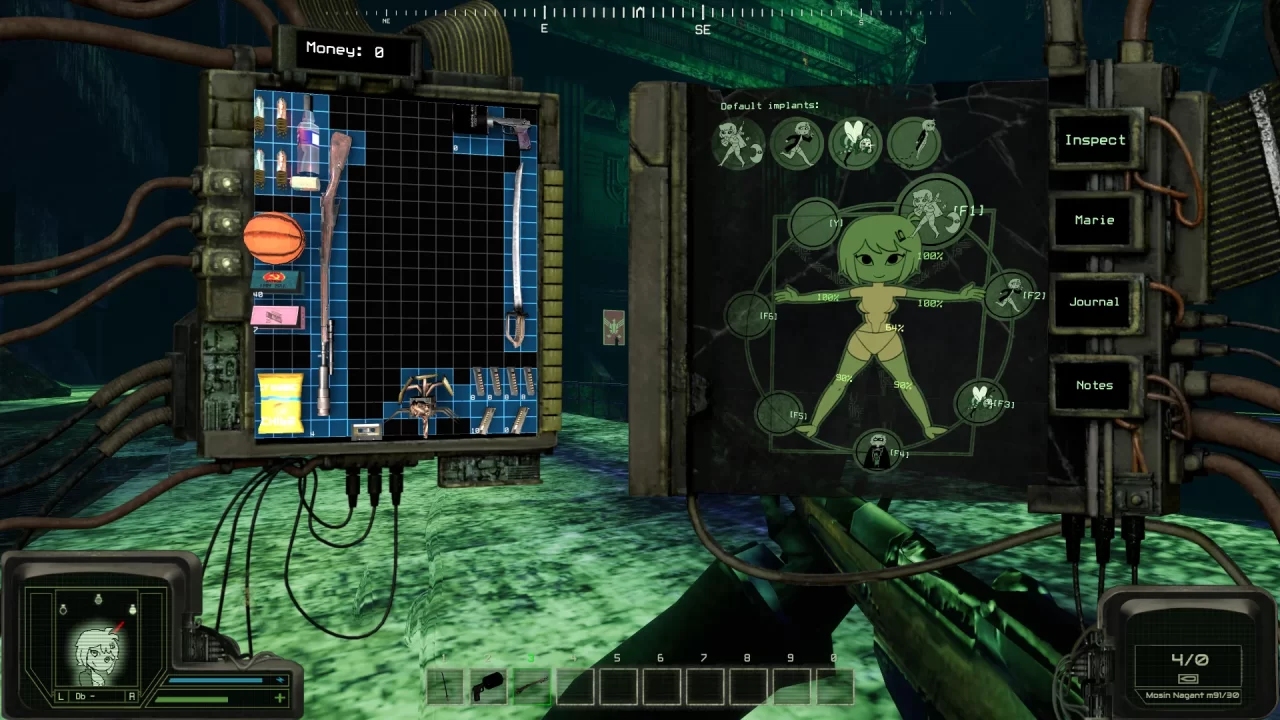No gaming genre is more hotly debated than the “Immersive Sim.” Combining elements of RPG, First-Person Shooters, Stealth, and Action-Adventure, the genre is more defined by developer pedigree and the amalgamation of various disparate gameplay mechanics rather than any truly defining structure. Peripeteia is emblematic of this conundrum, lifting elements from the defining classics of the subgenre (Deus Ex, Stalker, Dishonored, System Shock, Fallout) while managing to craft its own unique identity through its unique setting and visual style. Still in Early Access, what’s already on offer is quite impressive. I played the first three missions for this preview and spent over ten hours with the game. Developer Ninth Exodus still has a few rough edges to iron out, but any fan of the aforementioned classics should keep an eye on Peripeteia as it nears its full release.
The game wastes no time with tutorials, dropping you immediately into the game world with the first mission. You play as Marie, a heavily augmented cyborg who awakes in the middle of a scrap heap. Your first task is figuring out how to get yourself out of the pit of corroded machinery and discarded androids, giving you a small playspace to acclimate yourself to the controls and core abilities at Marie’s disposal. Marie’s various cybernetic augments are a core feature of Peripeteia, and she comes equipped with a handful at all times. She can engage a stimulant to increase her speed and strength, an ability that proves immediately necessary to jump high enough to reach a rusted ladder and climb out of the pit. She can also turn on night vision to see in dark spaces, which is crucial in some of the game’s darker areas. Augment use is governed by the energy meter, and some augments will drain the bar much quicker than others.
Once you pull yourself out of the pit, you meet the owner of this junk heap, Filamon. He fills you in on your current predicament, explaining that your memory was wiped before disposal and that local regulations prevent him from scrapping any still-living cyborgs. He’s in the hole for quite a bit of money since you’ve proven not to be dead and salvageable. However, he offers you the opportunity to make it up to him by retrieving a light bulb from the nearby planetarium. The only problem is that it’s the current hideout of some local bandits. Not wanting to see his investment go to waste, he offers you the choice between three armaments (semi-auto pistol, silence pistol, or shotgun) and three different augments (Possession, Invisibility, and Bullet Time). While exploring the environment can reward you with the remaining augments, this choice is the first opportunity to customize your character and provides an introduction to Peripeteia’s varied play styles. Do you want to go in quietly and stealthily with cloaking tech and a silenced pistol, picking off your foes one by one? Or do you want to run in guns blazing with a shotgun, popping your bullet time to avoid enemy fire as you blast away? I chose a middle ground, grabbing a semi-auto pistol and the Possession augmentation to cause chaos and quickly dispatch enemies.
Augments must be physically moved from your inventory and slotted onto your character, and this level of detail extends to all aspects of inventory management. Peripeteia features a CRPG-style grid-based inventory system, with items using a certain number of squares arranged like Tetris blocks in your limited space. Furthermore, magazines must be filled manually in real-time, so preparation is key to ensure you are well-stocked before entering into combat, as you can only reload without opening the inventory if you already have magazines ready to go. These limitations can be punishing, but they foster a sense of realism and weight to inventory management that caused me to make careful decisions about which weapons I wanted to pick up and how I approached combat encounters.

Peripeteia features a traditional text-based dialogue system, offering a variety of responses to NPC dialogue and the ability to probe characters for more information. If you ask Filamon a few questions, he will give you a bit of detail on the game’s grungy, post-Soviet cyberpunk world. It seems there was a large-scale conflict in the distant past which led to the collapse of society. In the power vacuum, two factions arose that form the basis for political conflict: the Polish Solidarity Republic (PSR) and the Second Unionists. The PSR is an ethnically Polish, Catholic military group that serves as the main power structure in the area. You frequently see their soldiers on patrol, and they serve as quest-givers during the game’s early missions. The Second Unionists are a Moscow-based group encroaching upon PSR territory, rarely seen except through their propaganda broadcasts over TV and radio.
There is some competent world-building behind these two factions, with the PSR initially seeming benevolent and the Second Unionists an antagonistic force. The first mission features a PSR government office in which disabled residents receive a government stipend for living expenses and a rooftop farming project in an abandoned swimming pool. However, there are some darker aspects to the group, from the constantly patrolling PSR soldiers who fight with a group of homeless vagrants, and a PSR soldier who gleefully boasts about killing an unarmed homeless man for sport. The Second Unionists, on the other hand, are employing violent bandits to secure their broadcast lines to pump propaganda into PSR areas, but with very little material benefit to the residents. Peripeteia crafts a bleak world that reminds me of the setting and characters in the S.T.A.L.K.E.R. series in particular, trading the irradiated wilderness and sparse ruins of the Chornobyl exclusion zone for the rain-slicked urban skylines of Soviet residential blocs with a cyberpunk bent.
Peripeteia’s mission design complements its world’s morally complex nature, which features a great degree of freedom and player agency in how to complete objectives. For example, in the first mission, you can clear out the unruly Subculuralists who have taken over the Planetarium by force, or you can join forces with them and agree to plant explosives in the nearby PSR office in exchange for safe passage to the Planetarium’s interior. Once inside the Planetarium, you can choose between carrying the android caretaker back to Filamon or partnering with a Cosmist priest who resides in a cryogenic storage facility underneath the building who will turn off the Planetarium if you share the access codes. Acquiring said access codes requires you to take a rooftop tram to a radio broadcast tower, where a Second Unionist commander awaits with an entire army of hired guns. You have complete freedom to choose any of these tasks, and each one will result in a different route for mission completion and impact the state of the world. There are also side objectives and hidden secrets that will reward you with powerful equipment or supplies. The only downside is that you cannot take items with you from mission to mission, so anything you obtain will be lost once you move forward.
Combat mechanics are pretty standard for first-person shooters of this type, featuring aiming down sights, leaning around corners, crouching, strafing, etc. The stealth mechanics are robust, with an indicator denoting — through an easily readable cartoon depiction of Marie’s face — whether you are hidden in shadow or visible to enemies, and a meter that measures how much noise you are making. Enemies react as you would expect to sight and sound. The damage model is split into various body segments, represented by a full-body caricature of Marie akin to Fallout‘s Pip-Boy display. Limb damage makes it difficult to run or aim, and damage to the head will obscure your vision. You can heal individual body segments through batteries, similar to stimpacks.
Combat encounters are where most of the Early Access problems rear their ugly heads due to some pernicious bugs with enemy behavior and AI. Enemies will often bug out and become invulnerable, fall through the floor, or otherwise exhibit strange errors that break immersion and ruin a carefully planned attempt at stealth. The game encourages you to quicksave and load frequently, so these instances were rarely game-breaking, but with many enemies on screen in a firefight, things would regularly break down. Marie isn’t spared from the instability, such as bugs preventing her augments from functioning properly despite ample energy, or her guns rendered unable to fire (which is frequently a death sentence). The game performs very well in the exploration segments and combat with only a few enemies, but the stability quickly deteriorates in large-scale firefights.
If you are patient, enjoy immersive sims, and quicksave often, Peripeteia is worth checking out even at this early stage, as it features a solid foundation for an excellent immersive sim. Otherwise, you may feel this diamond in the rough requires a bit more polish and may want to wait until the game is closer to full release to jump in. However, I found the level of detail in the mechanics and the fleshed-out world design immediately engaging, and I quickly lost myself in the first few missions I played for this preview.
Peripeteia launched into Steam Early Access today for Windows PCs.





